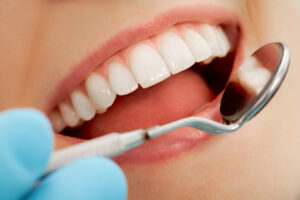Flossing is an essential part of maintaining optimal oral hygiene. While brushing removes plaque and food particles from the surfaces of your teeth, flossing addresses the harder-to-reach spaces between teeth and along the gumline. However, a common debate in modern dentistry is whether water flossers or traditional string floss is the superior choice.
With advancements in dental technology, water flossers have become a popular alternative to traditional flossing. But are they truly better? In this comprehensive guide, we’ll compare the two methods, highlighting their advantages and drawbacks, and help you decide which option is right for you.
The Importance of Flossing
Before diving into the debate, it’s essential to understand why flossing is non-negotiable for good oral health. Flossing removes plaque, food particles, and bacteria from areas that toothbrushes cannot reach. Regular flossing helps prevent:
- Cavities: Plaque buildup between teeth can lead to decay.
- Gum Disease: Leftover debris can irritate gums, causing inflammation and eventually leading to gingivitis or periodontitis.
- Bad Breath: Food particles stuck between teeth are a breeding ground for odor-causing bacteria.
The American Dental Association (ADA) recommends flossing at least once daily to maintain a healthy smile.
What Are Water Flossers?
Water flossers, also known as oral irrigators, are devices that use a pressurized stream of water to clean between teeth and along the gumline. The water jet effectively removes food particles, plaque, and bacteria, making it an appealing option for individuals who find traditional flossing cumbersome.
What Is Traditional Flossing?
Traditional flossing involves using a thin piece of string (usually made of nylon or Teflon) to manually clean between teeth. By sliding the floss back and forth, you can remove plaque and debris while stimulating the gumline to improve overall oral health.
Comparing Water Flossers and Traditional Floss
Let’s break down the key differences between these two methods, weighing their pros and cons:
1. Ease of Use
- Water Flossers:
Water flossers are user-friendly, especially for individuals with limited dexterity or those who find string flossing challenging. Simply point the nozzle between your teeth and let the water stream do the work.
Pro: Ideal for people with braces, dental implants, or arthritis.
Con: Requires access to a power outlet or batteries. - Traditional Flossing:
String flossing requires manual dexterity and proper technique to be effective. While it’s straightforward for most, some people find it difficult to maneuver the floss around tightly spaced teeth or dental work.
Pro: No need for batteries or electricity.
Con: Can be time-consuming and tricky for some users.
2. Effectiveness in Plaque Removal
- Water Flossers:
Studies have shown that water flossers can be just as effective as traditional flossing at removing plaque and reducing gum inflammation. They excel at flushing out debris from hard-to-reach areas, especially around braces and dental appliances.
Pro: Excellent for cleaning gum pockets and areas around dental work.
Con: May not always dislodge sticky plaque as effectively as string floss. - Traditional Flossing:
String floss is highly effective at scraping plaque off tooth surfaces when used correctly. Its physical contact with the tooth allows for precise plaque removal.
Pro: Superior at removing plaque from tight spaces between teeth.
Con: Improper technique can lead to incomplete cleaning or gum irritation.
3. Gum Health Benefits
- Water Flossers:
The pulsating water stream of a water flosser can massage the gums, promoting blood circulation and reducing inflammation. This makes it particularly beneficial for individuals with sensitive or bleeding gums.
Pro: Gentle on sensitive gums.
Con: May not provide the same tactile feedback as string floss. - Traditional Flossing:
Traditional flossing stimulates the gums and removes bacteria-laden plaque that can cause gum disease. However, aggressive flossing can sometimes harm gum tissue.
Pro: Time-tested method for maintaining gum health.
Con: Requires careful technique to avoid irritation or damage.
4. Convenience and Portability
- Water Flossers:
While water flossers are effective, they are bulkier than a simple spool of string floss. They also require water and electricity, which can be inconvenient when traveling.
Pro: Easy to use at home.
Con: Less portable and requires maintenance. - Traditional Flossing:
A roll of string floss is compact, portable, and easy to carry anywhere. It’s the ultimate on-the-go solution for oral hygiene.
Pro: Highly portable and low-maintenance.
Con: Can be less appealing for those who struggle with the technique.
5. Cost
- Water Flossers:
The initial cost of a water flosser is higher, with prices ranging from $30 to $100 or more. Replacement tips and regular maintenance add to the expense.
Pro: Long-term investment with reusable components.
Con: Higher upfront cost. - Traditional Flossing:
String floss is inexpensive, with a spool typically costing a few dollars. It’s an economical option for maintaining oral hygiene.
Pro: Budget-friendly.
Con: Requires regular repurchase.
Which Option Is Right for You?
The choice between a water flosser and traditional floss largely depends on your individual needs, preferences, and dental health goals:
- Choose a Water Flosser If:
- You have braces, dental implants, or bridges.
- You struggle with manual dexterity or find string flossing uncomfortable.
- You want a gentle, gum-friendly option.
- Choose Traditional Floss If:
- You prefer a portable, low-cost solution.
- You have tight spaces between your teeth that require precise cleaning.
- You want a tried-and-true method for plaque removal.
The Best Solution: Combine Both Methods
For optimal oral hygiene, consider using both a water flosser and traditional floss. Water flossers are excellent for flushing out debris and cleaning around dental appliances, while string floss is ideal for removing sticky plaque in tight spaces. Combining the two can provide comprehensive cleaning and superior gum health.
The Methal Dental Arts Approach to Flossing
At Methal Dental Arts in Brooklyn, New York, we understand that every patient’s oral health needs are unique. During your dental visit, we’ll evaluate your gum health and recommend the best flossing method for your lifestyle. Whether you’re considering a water flosser, sticking with traditional floss, or combining both, our experienced team is here to guide you.
Conclusion
Flossing is an indispensable part of oral hygiene, and both water flossers and traditional floss offer distinct benefits. Understanding the pros and cons of each method allows you to make an informed decision that fits your dental needs and preferences.
If you’re ready to take your oral health to the next level, schedule an appointment with Methal Dental Arts today. Together, we can create a personalized oral care plan that keeps your smile healthy and radiant for years to come.




